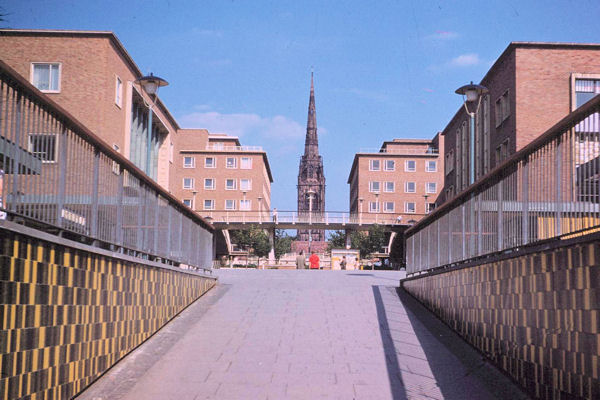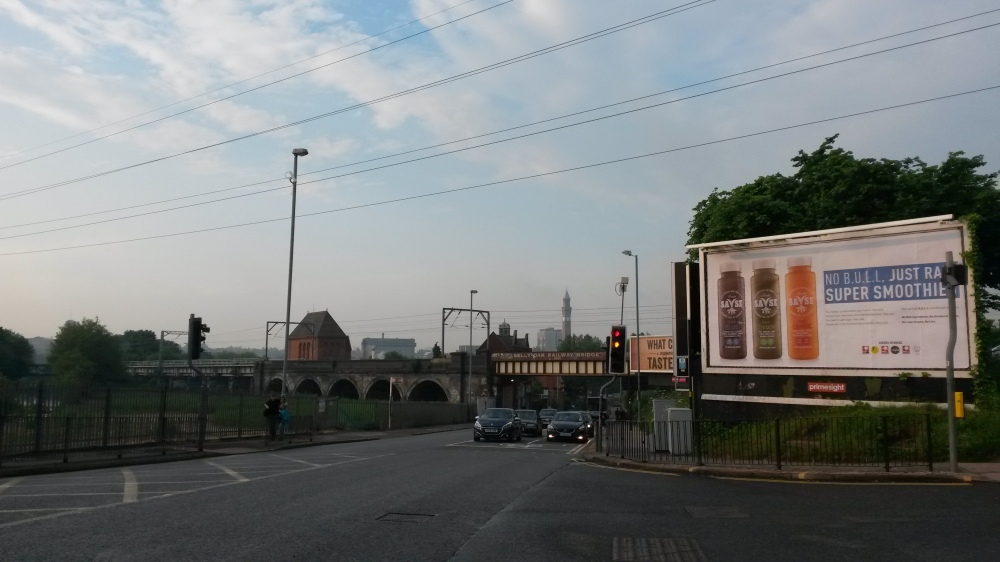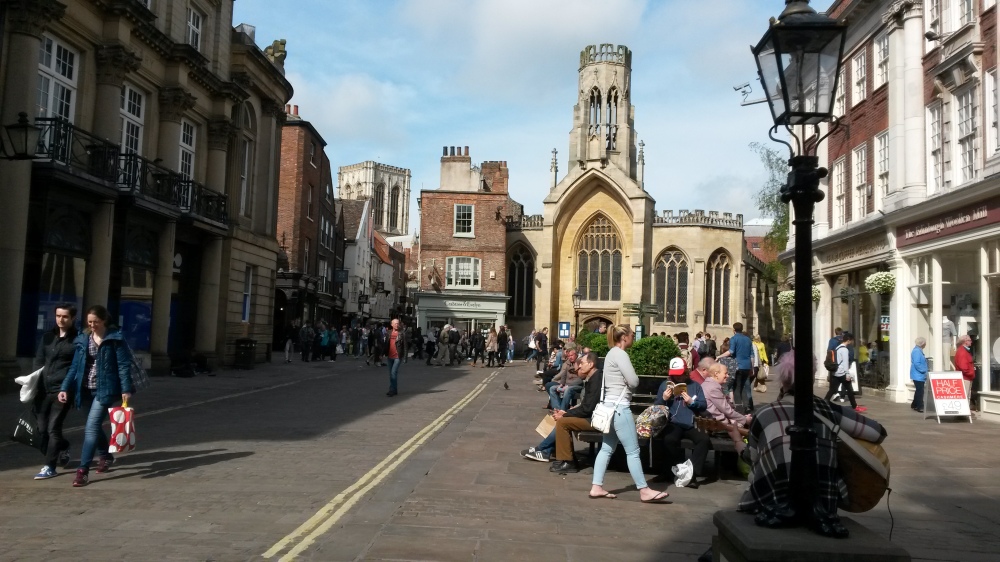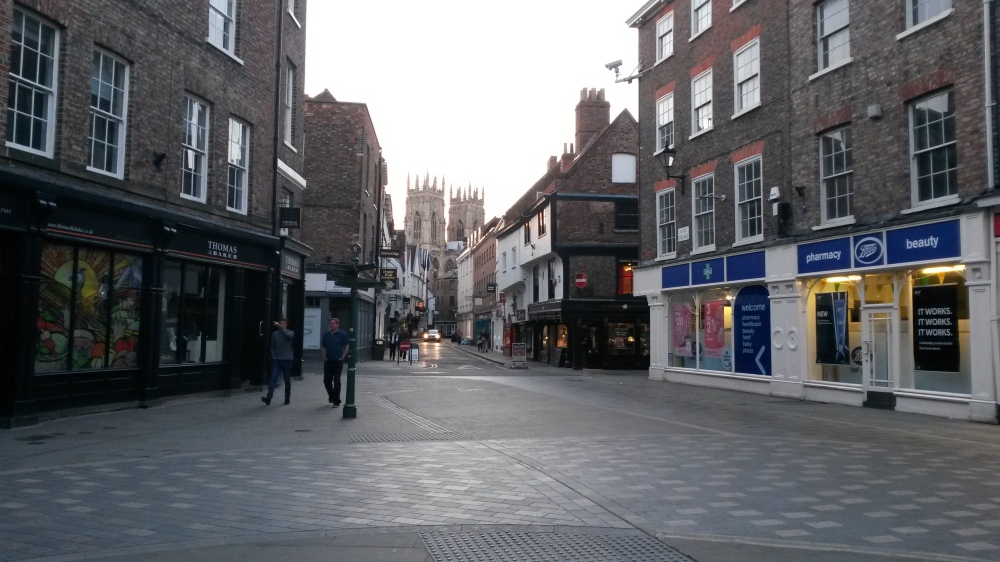On the face of it the University of Birmingham’s Centre for Contemporary Cultural Studies seems a strange point from which to explore the evolving relationship between post-war social science Britain and conceptions of place. The CCCS, after all, are noted for their groundbreaking work in the field of media studies, the study of gender and race.
Policing the Crisis, the Centre’s era defining study of the politics of law, order and reaction in 1970s Britain notably begins by stating that the author’s interest in the media created phenomena of “mugging” began with “a case known to us in Handsworth”. Handsworth is a district of central Birmingham about four miles north of the University’s campus. However, from these origins clearly grounded in a very specific location and set of local circumstances, Policing the Crisis accelerates. It moves from the specific to the general, with most of the rest of the book comprising a study of the nexus between media representation and political praxis.
The same is true of other classic CCCS texts, like Dick Hebdige’s Subculture: the Meaning of Style. Hebdige’s primary subject in Subculture is a loosely defined, universal conception of alienated urban youth. In his paper Reggie, Rastas and Rudies published in Resistance Through Ritual three years before Subculture, Hebdige briefly focuses his critical gaze upon “mod youths” living in generic suburbs in south east England, “accelerating along by-passes on their scooters”. But beyond this his work, whilst resplendent with markers of social division; does not impart any sense of the specificities of place.
We perhaps shouldn’t be surprised by the CCCS’ apparent lack of interest in the specificities of location and the peculiarities of place. As Mike Savage shows in the Politics of Method mid-20th Century British social science, taking the lead from practitioners in the United States and keen to escape its crudely didactic origins, became fixated on the search for the mean. In the 1950s and ‘60s the work of British sociologists like Elizabeth Bott and Ray Phal actively worked to undermine the idea that place retained saliency. The recent-separate-studies conducted by Jon Lawrence and Selina Todd into the Goldthorpe’s Affluent Worker Study and the early work of Michael Young, reinforce this impression. Whether like Young they bemoaned it, or like Goldthorpe they saw it as potentially emancipatory, the general tenor of mid-20th Century pointed to ever greater homogeneity and place’s increasing redundancy.
As we’ve seen the work of Dick Hebdige on subcultures and Stuart Hall and his collaborators on Policing the Crisis, growing out of mid-20th Century sociology and heavily influenced by the structuralist theory of Althusser and Barthes, whilst brilliant and sadly still relevant, is fundamentally uninterested in place as a category in of itself.
I have however, identified a different strand of the CCCS’ work, an ethnographic strand, which did, from the late 1960s onwards, started to take a keen interest in place and its sociological significance.
I will briefly outline where I think that this interest stemmed from and I will suggest some reasons why I consider it significant. However, as mentioned, I come here with questions as much as answers and would very much appreciate your thoughts either during the questions or later at the reception about what the wider historical significance of all this is.
There was another strand in mid-20th Century British thought a decidedly literary one. The scholars in mid-20th Century Britain for whom place mattered were people like Raymond Williams, Asa Briggs and E.P. Thompson, all of whom were heavily influenced by the “new criticism” that flowed out of the University of Cambridge during this period. A new approach that scholars like Williams, Thompson and Richard Hoggart, the founder of the CCCS, interpreted as meaning that criticism meant nothing if it was not socially engaged with the entire spectrum of culture and everyday life.
What better defence and illustration of the significance of place at a time when it was marginalised in discourse is there than Richard Hoggart’s The Uses of Literacy? It invokes and evokes strong ethnographic images of mid-20th Century working class Leeds to make its points about the effects of mass production and capitalism upon people.
I believe that, with a rather different accent and inflection, Hoggart’s interest in place and its significance in people’s lives continued after he left the Centre in 1968. Through four cases studies of CCCS ethnographers, all of whom studied English prior to starting their work at the Centre, I will show how an interest in place came to the fore in the work of a group of British social scientists.
Janet Mendelsohn, an American, arrived at the University of Birmingham in 1967 as a visiting student from Harvard. Her interest appears to have been in blending the techniques of photojournalism with the tools, method and agenda of a social scientist.
Mendelsohn spent two years in Birmingham. Over this time her project evolved from an interest in the markers and signifiers of poverty, sex work and race relations towards nuanced study of place and community. A shift that can be seen in the photographs she took of Birmingham’s Balsall Heath.
This photo (see Powerpoint) is in many ways a quintessential early CCCS image. It shows a traditional corner shop in a working class area, festooned with commercial and mass media signifiers that intrude and encroach upon the community.
Content wise this image is similar to the first one. In the form of the drinks poster we can see the commercial signifiers imposing once again. However, if we look just below, next to man wearing a turban, we can see a poster made a by a the local Afro-Caribbean Association, advertising a dance that they are putting on.
The image complicates the earlier narratives, present in both the humanities and social sciences, about the spread of homogeneity. Whilst the commercial signifier in the form of the soft drinks advert looms large over the rest of the picture, highlights the significance and corrosive power of image in capitalist society. The presence of the incomers, Sikhs and Afro-Caribbeans and their clear agency; renders this reading overly reductive.
Through the closeness and contradictions that characterised relations between different immigrant groups in the area, we get a sense of the districts changing topography as it underwent redevelopment. We also get a feel for the local characters, shops and entertainment venues. Whilst not necessarily uncritical, and potentially open to charges of voyeurism, taken together the photographs are a celebration of the specificities of place, drawing attention to Balsall Heath’s unique and particular qualities.
By capturing the grain, and more voyeuristically, the peculiarities and spectacle of life in Balsall Heath the photos enable us to get sense of what the area was like in the late 1960s, providing a sense of place.
A similar shift can be observed in the work of Paul Willis. Willis’ doctoral thesis completed in 1972 and published as the book Profane Culture is heavily influenced by semiotics and literary theory. Willis’ debt to Barthes and Althusser is clearly displayed, but in terms of form and focus it reads like Richard Hoggart hitching a lift with a young Hunter S. Thompson.
Willis states his research, an ethnographic exploration of the worldview, referents and significance of the motorcycle and hippie subcultures, was conducted in “a large midlands industrial city. From this a reader might deduce that Willis is referring to Birmingham, however, there is little sense of place imparted beyond this. Willis’ subjects float in a realm of signifiers. Their reflections upon the importance of the music that they listen to, their experiences of work and home life, the substances that they do and don’t consume and the significance that they attach to these things, float freely.
Part of this idiosyncratic book’s charm is the wonderful literacy and fluency with which Willis uses his encounters with bikers and drug takers to build up a set of almost decontextualised reference points around which he weaves an argument about class, alienation and youth self-determination. In its soixante-huitard Marcusian grandeur and optimism, it was probably out date by the time he was examined on his thesis.
Willis’ project at the Centre after the completion of Profane Culture, Learning to Labour, the fieldwork for which was conducted between 1974 and 1975 stands on very different ground. Learning to Labour subtitled How Working Class Kids Get Working Class Jobs, follows a group of working class “lads” through their final year at school before going out into the workplace.
Here, whilst not intimately concerned with aspects of place, Willis adopts a very different approach. Rather than floating free, constrained only by their relationship to the means of production, class position and ideological baggage, the “lads” that Willis studies are heavily interwoven with the community that they live in, their choices defined by their hometown’s economic structure.
Learning to Labour opens with a detailed description of the situation of “Hammertown” the Black Country settlement where the “lads” have grown up. Willis describes the town’s history and prior economic and social development, its class structure, that it is overwhelmingly working class; and that unlike other neighbouring towns, with economies based around workshops its economic structure is based upon the large plants of “a few multinational engineering firms”. He also describes how the town relates to its neighbours in other ways, the prosperous outlying suburban areas from which the teachers at “Hammertown Boys” and the managers in industry commute and the “large city” [Birmingham] which “lies at the heart of the local conurbation. He even notes as an aside that the fact Hammertown shares a postcode with the large neighbouring city is a line used by the “lads” in his study when they are trying to impress girls from other less felicitous towns.
From this introduction sprinkled with local and incidental detail, Willis’ account continues to be streaked with a clear sense of place. Willis’ concerns and policy suggestions are national, even universal in scope, relating as they do to careers policy in schools and the choices that individuals are forced to make in class societies. However, the ballast that supports them is anchored both in the words of the “lads” themselves and a culture and situation which is many ways highly regional specific.
He tries to show how the distinctively rough culture of the foundry and machine shop shapes the “lads” sense of themselves and their place in the world. Willis teases out clear ethnic and gendered dimensions to this.
The ethnic dimension in particular gives a clear place specific flavour to the relations that Willis describes. The Black Country in the 1970s was a stronghold of the National Front. In 1976 the party polled 27.5% of the vote in elections to Sandwell Metropolitan Council, judging by Willis’ description, Hammertown is almost certainly one of the constituent towns of the Sandwell Council area.
Willis uses his “lads” words to show the role that this kind of overt racism played in cementing bonds between white working class males in the workplaces of the mid-1970s Black Country. Given that mass immigration was a highly localised phenomena at the time this state of affairs gives readers a clear sense of place. The wider point that Willis makes, that racial hatred distracted workers in “Hammertown’s” foundries and workshops from seeing that their true enemy was a system rigged against them dictated by capital, is; in this instance; dictated by highly particular and localised examples of grievances.
With regards the schooling system itself, again Willis’ arguments stretch far beyond Sandwell and indeed far beyond the UK. As do his policy prescriptions, one of which could be read as Marxist demand for free or academy schools, thirty or forty years before they became part of neo-liberal reality. However, the specific examples that Willis gives of the failure of comprehensive schooling in Hammertown rest, yet again, upon specific local factors, even whilst his ideological concerns remain universal. Willis singles out the town’s unusually socially un-mixed population as a factor in why some many young people end up going into routine manual jobs. This is quite unusual in the West Midlands, an area which; as in London-at least historically-and unlike Leeds or Sheffield for instance, generally sees working class and middle class areas sit side by side.
Willis suggests that the lack of spatial residential proximity between people in professional jobs and those in manual ones causes greater division. Throughout the book he illustrates this through testimony from both teachers and the “lads” how the geographical distance between the teachers and pupils at the primary secondary school he studies creates lower expectations on both sides.
Willis’ scholarship and the discussions held in the “Work” working group that he co-ordinated, inspired others. Dorothy Hobson, another CCCS member deeply interested in ethnography and the power of place, has spoken of how Willis’ interests and approach influenced her own work. Hobson and Angela McRobbie, my final two case studies, further developed the CCCS ethnographic approach by using it to investigate the experience of being female in Birmingham. As with Mendelsohn and Willis their work shows an interest in place and how it shapes people.
Angela McRobbie’s PhD, parts of which were published as Working Class Girls and the Culture of Femininity in Women Take Issue covered similar ground to Willis’ study of the Hammertown lads. McRobbie interviewed, over the course of six months, female members of a youth group on a council estate in south west Birmingham. She asked them about their relationships with their families and peers, their self-perception and expectations for their future.
Many aspects of her research focus on the idea of an imprisoning “code of femininity” and the specific class related pressures faced by the girls that she studied. McRobbie is, well known for Jackie her study of the ideology of teenaged girl’s magazines, indicating an interest in the media and representation which continues to animate her research to this day. However, as with Willis, in The Culture of Femininity specific issues are clearly deeply embedded in the specific local context of south Birmingham.
McRobbie juxtaposes the contrasting experiences of life in a major city experienced by working and middle class adolescent girls. The working class girls that she interviewed lived lives that were highly bound the estate where they lived, lives which even in mid-adolescence mirrored those of their mothers and older sisters. The girls from the youth club that McRobbie interviewed were expected to do household chores for pocket money, mirroring the sort of char-women types jobs taken on by their mothers. For instance the girl who described her mother’s work as “cleaning out the labs and all that [at the University of Birmingham a mile or two up the road]”.
By contrast the middle class girls mentioned in McRobbie’s paper, she doesn’t quote them, are depicted as being far more able to make the most of living a life in a major city. Their social life is described as being far more centered on the city centre, attending art centres and discos and using public transport to attend schools outside of the immediate areas where they grew up.
Housewives: Isolation as Oppression, Dorothy Hobson’s contribution to Women Take Issue, covers similar ground to McRobbie’s work on adolescent girls. It is, however, in many ways even more striking, in that despite the fact that all of the women Hobson speaks to are stuck in their high-rise flats all day, how much of a sense of place is evoked.
In many ways the landscape that Hobson describes, isolated, exurban, socially atomised, is exactly the kind of homogenised environment that Michael Young railed against in Family and Kinship nearly thirty years earlier. However, the transcripts of Hobson’s ethnographic interviews with participants in their homes develops an altogether different picture, one which is at once richer and more mundane.
Hobson’s primary concern is to explore how the women feel about the transition from work to being stay at housewives. From this material Hobson paints a picture of how women in low waged, frequently insecure work navigated and experienced the urban environment of south Birmingham in the mid to late 20th Century. It’s a world criss-crossed by bus routes leading from system built council estates to industrial estates populated with corrugated iron sheds where the basic components of industrial civilisation are churned out. This routine pattern of existence is punctuated by bursts of dancing, again linked by the bus, in both local and city centre venues. Through snatches of interview like this Hobson constructs the mental geography and subjective experience of working class life in Birmingham.
The parts of the study that at first glance seem to focus more on the women’s psychic world, their experience of transitioning to being a housewife, of spending much of everyday by themselves doing housework and looking after infants, is also highly attuned to place. Hobson captures a lot of the women’s feelings about their homes in high-rise blocks on the edge of King’s Norton, which is itself on the outskirts of Birmingham.
Their husbands are well paid car workers at the nearby Langbridge plant, their wages as the reason why, unlike the mothers of the girls in McRobbie’s study; the women do not have to go out to work. Hobson captures the effect of this, one woman tells her that living eight stories up in air and only knowing a few people in the block to “say hello to” that the media has become her “only connection to the outside world”.
In many ways this seems like the culmination of the concerns expressed about the effects of modernisation and the mass media upon human relations. In fact it is a far more place specific phenomena than that. The women that Hobson interviews are from a relatively affluent strand of the working class and their life experiences are determined by the-at this time-relatively prestigious estate upon which they live, which just happens to be structured in such a way and located in such a place as to minimise their opportunities for human interaction. In this way Hobson’s work is deeply shaped by and concerned with place.
I believe that my exploration of how members of the CCCS began to turn to place from about 1968 onwards, whilst having clear antecedents, can be factored into wider changes in society. Changes which point to a shift away from the general towards towards the more specific. In the months ahead I intend to conduct further research and develop a clearer picture of the significance of the CCCS’ ethnography to the development of cultural studies and our understanding of people and places.
Adapted from a paper given at the Cities@SAS: New Researchers in Modern Urban History Conference, 4th July 2016.








